#urlstructure
Text
Understanding the Elements of a URL: Domains, Subdomains, Paths, and Parameters

Uniform Resource Locators (URLs) serve as the addresses for resources on the internet, allowing users to access web pages, files, and other online content. A URL consists of several components, each serving a specific purpose in identifying and locating the desired resource. In this article, we'll delve into the key elements of a URL, including domains, subdomains, paths, and parameters, and explore their roles in web navigation and organization.
1. Domain:
The domain is the primary component of a URL and typically represents the web address of a specific website or online service. It is preceded by the "https://" or "http://" protocol identifier. For example, in the URL "https://www.example.com", "example.com" is the domain. Domains are unique identifiers registered with domain registrars and serve as the primary address for accessing a website.
2. Subdomain:
A subdomain is a secondary domain that precedes the primary domain in a URL. Specifically, it helps organize and navigate to different sections of a website. Subdomains are used to organize and categorize content within a website or moreover, to distinguish between different sections or services. For example, in the URL "https://blog.example.com", "blog" is the subdomain. Subdomains can be used for various purposes, such as hosting blogs, forums, or e-commerce platforms, while still being part of the same parent domain.
3. Path:
The path component of a URL specifies the location of a specific resource within a website's directory structure. Consequently, it enables users to access and navigate to desired content effectively. It follows the domain and, if present, the subdomain, and typically consists of a series of directory names or file paths separated by slashes ("/"). For example, in the URL "https://www.example.com/blog/article", "/blog/article" is the path. Paths are used to navigate to specific pages, directories, or files within a website. In other words, they help users and systems locate resources on the web.
4. Parameters:
Parameters are additional data included in a URL that provide instructions or information to the server about how to handle the request. Furthermore, they facilitate customization and dynamic interaction with web applications. These are separated from the rest of the URL by a question mark ("?") and are followed by one or more key-value pairs separated by ampersands ("&"). For example, in the URL "https://www.example.com/search?q=keyword", "?q=keyword" is the parameter. Parameters are commonly used in dynamic web pages to pass data to server-side scripts or APIs, such as search queries, user preferences, or session identifiers.
Conclusion:
Understanding the elements of a URL, including domains, subdomains, paths, and parameters, is essential for navigating the web effectively and accessing online resources. Domains serve as the primary addresses for websites, while subdomains help organize content within a site. Paths locate resources within a website, while parameters add instructions or data to the server. Understanding each part of a URL helps users navigate the web efficiently and find information easily.
0 notes
Text
Master on-page SEO with our comprehensive guide! Learn how to optimize your website's source code, content, and visuals to rank higher in search results. Discover the essential elements like keyword research, title tags, meta descriptions, site speed, and mobile responsiveness. Boost your online presence with LBN Tech Solutions' expert SEO services.
#OnPageSEO#SEO#DigitalMarketing#KeywordResearch#MetaDescriptions#TitleTags#WebsiteOptimization#PageSpeed#MobileSEO#SearchEngineOptimization#ContentMarketing#SEOTricks#LocalSEO#VisualContent#InternalLinking#URLStructure#CoreWebVitals#WebDevelopment#DigitalStrategy#LBNTechSolutions
1 note
·
View note
Text
The Key Elements of a Well-Designed Website
Introduction:
A well-designed website is crucial for creating a positive user experience, establishing credibility, and achieving your online goals. In this blog, we will explore the key elements that contribute to a well-designed website and help you make a lasting impression on your visitors.
Intuitive Navigation:
A well-designed website should have intuitive navigation, allowing visitors to easily find the information they are looking for. Use clear and concise menu labels, organized submenus, and a logical hierarchy to guide users through your website seamlessly. Incorporate a search bar for quick access to specific content.
Responsive Design:
In today's mobile-centric world, a well-designed website must be responsive and adapt to different screen sizes and devices. Ensure that your website is mobile-friendly, with content that is easily readable and navigable on smartphones and tablets. Responsive design enhances the user experience and improves search engine rankings.
Engaging Visual Design:
Visual design elements, such as color schemes, typography, and images, play a significant role in capturing visitors' attention and conveying your brand identity. Use a visually appealing and consistent design that aligns with your brand. Balance text and images to create a visually engaging and accessible website.
Clear Call-to-Actions (CTAs):
A well-designed website includes clear and strategically placed call-to-action buttons. Use compelling and action-oriented language to encourage visitors to take the desired action, whether it's making a purchase, subscribing to a newsletter, or contacting you. Use contrasting colors and position CTAs prominently to attract attention.
Fast Loading Speed:
Optimize your website's loading speed to provide a seamless user experience. Slow-loading websites can frustrate visitors and lead to high bounce rates. Compress images, minify CSS and JavaScript files, and leverage caching techniques to improve your website's performance and loading times.
Consistent Branding:
Consistent branding is essential for a well-designed website. Use your brand colors, fonts, and logo consistently throughout your website to reinforce your brand identity and maintain a cohesive look and feel. Consistency builds trust and familiarity with your audience.
Accessible Design:
Ensure that your website is accessible to all users, including those with disabilities. Incorporate accessibility features such as alt text for images, proper heading structure, and descriptive link text. Adhering to accessibility guidelines improves user experience and widens your website's reach.
Well-Structured Content:
Organize your content in a logical and easy-to-read format. Use headings, subheadings, bullet points, and paragraphs to break up content and make it scannable. Incorporate relevant keywords naturally to improve search engine optimization (SEO) and make your content more discoverable.
Social Media Integration:
Integrate social media buttons and shareable content to encourage visitors to engage with your brand on social platforms. This allows users to easily share your content, increasing your website's visibility and driving more traffic.
Conclusion:
A well-designed website incorporates intuitive navigation, responsive design, engaging visual elements, clear CTAs, fast loading speed, consistent branding, accessible design, well-structured content, and social media integration. By focusing on these key elements, you can create a website that captivates visitors, enhances user experience, and helps you achieve your online goals. At Gsinfotechvis, we specialize in web design and can help you create a well-designed website that stands out from the competition. Contact us today to elevate your online presence.
#OnPageSEO#UserExperience#WebsiteOptimization#PageSpeed#MobileOptimization#InternalLinking#URLStructure#MetaTags#HeadingTags#SEOBestPractices
0 notes
Text
"Responsive, dynamic, unforgettable – that's our design ethos."
#KeywordOptimization#ContentQuality#MetaTags#URLStructure#InternalLinks#HeaderTags#ImageOptimization#MobileResponsiveness#PageSpeed#UserExperience#StructuredData#ContentUpdates#AnchorText#CanonicalTags#301Redirects#SchemaMarkup#SocialInteg
0 notes
Photo
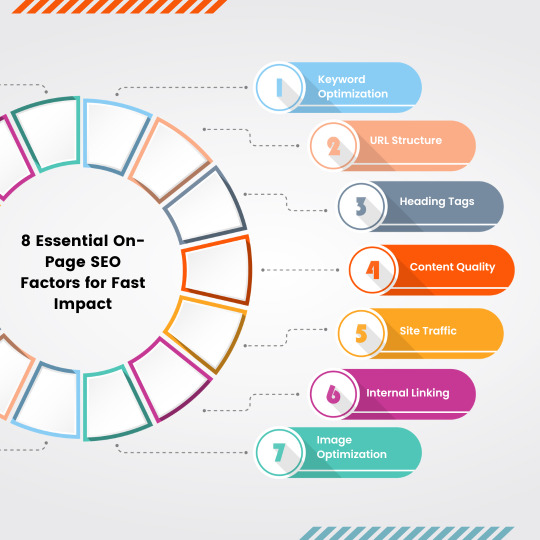
on-page SEO is just one aspect of a comprehensive SEO strategy. It's important to complement these efforts with off-page SEO techniques like link building, social media promotion, and improving user engagement signals to maximize your website's visibility in search engines.
0 notes
Video
youtube
How to create SEO Friendly URL | Type of URL Structure | Key Point of URL
URLs that are well-optimised are essential for both SEO and user experience. URLs are among the many characteristics that search engines use while making decisions. URLs, like page titles, assist search engines and potential visitors characterize a web page, so they should be precise, attractive, and well-structured. While there are other aspects to consider, here are eight best practises for developing SEO-friendly URLs.
If you constructed your page without conducting keyword research (which is never a smart idea if you want to rank), make sure to complete the steps in the correct order.
1. Begin with your page title.
2. Special characters should be removed.
3. Remove the numbers
4. Remove any unnecessary information.
5. Reduce it to a single word.
6. Use keyword modifiers
7. Make it readable.
8. Make it all lowercase.
9. Substitute hyphens for spaces.
#url #urlstructure #seofriendly #urlfriendly #onpage #onpageseo #urlseo #searchengineoptimization #urloptimize #keyword #typeofurl #friencdlyurl #connections #character #website #webpage #urldesign #lowercashurl #youtube
0 notes
Photo

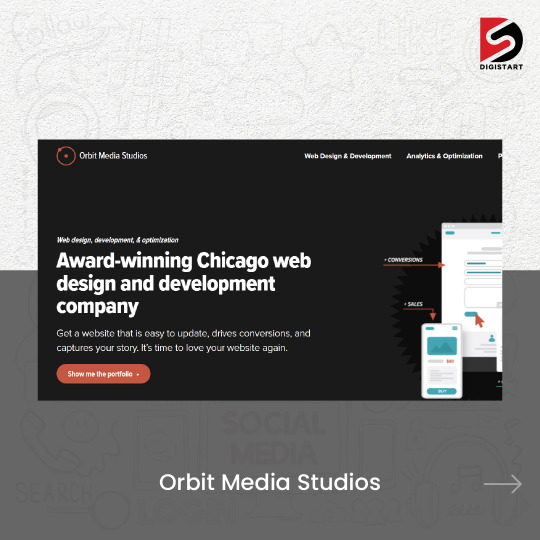




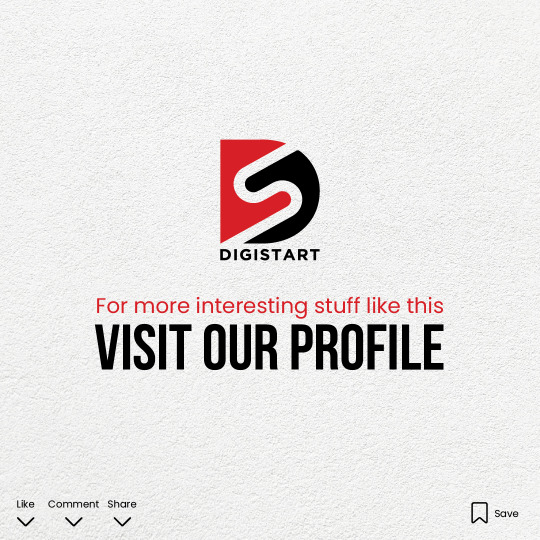
Stop! Read this if you run digital ads.
If you run digital ads, you need to incorporate UTM codes within your ad campaigns. They help track which customers generate the most revenue and help businesses see where your marketing is most effective.
Here is an excellent URL builders that will help you incorporate UTM codes to your campaigns
.
.
.
.
.
Follow 👉 @digistart
Contact Us To Know More!:➡️ https://www.digistart.in📞+91 9606047336
#digistart#digitalmarketing#marketing#digital marketing#utm#urlbuilder#digitalagency#urlstructure#seo#search engine optimisation (seo) software#socialemediamarketing#branding
1 note
·
View note
Text
URL Structure – Importance of URL Structure In SEO
What is the URL?
URL is an abbreviation for “Uniform Resource Locator” and is used to identify the address of particular documents or other resources on the internet. URLs consist of multiple parts that include “a protocol and a domain name.” It tells a browser about how and from where to retrieve a resource.
What is the URL structure?
URL structure is the anatomy of how a particular URL looks like. Usually, it either starts with “http or https.”
S stands for the secured version of websites in “https.” It is recommended to use “https” for the various reasons that you can read here.
What is the importance of URL structure in SEO?
If you observe the SERP results carefully, you won’t see a URL that has improper structure. Either you see a search result with breadcrumbs or a proper URL structure.
User Experience
Rankings
Links
Tracking in Analytics
Keep it Simple & Concise.
0 notes
Photo
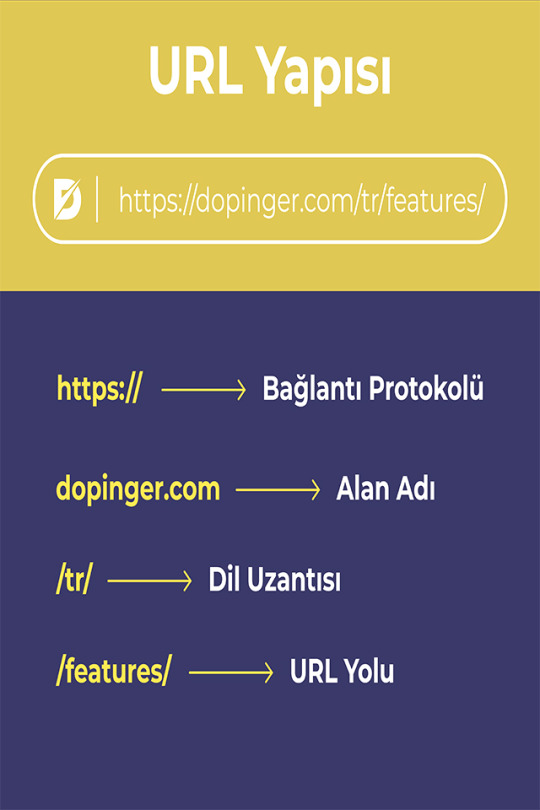
Genellikle "web adresi" olarak bilinen URL (Uniform Resource Locator), bir kaynağın (bir web sayfası gibi) internet üzerindeki konumunu belirtir📍.
URL'ler SEO için neden önemlidir💡?
1. Geliştirilmiş kullanıcı deneyimi sunarlar
İyi hazırlanmış bir URL, hem insanlara hem de arama motorlarına, hedef sayfanın ne hakkında olacağına dair anlaşılması kolay bir gösterge sağlar.
2. Sıralamalar
URL'ler, belirli bir sayfanın veya kaynağın bir arama sorgusuyla alaka düzeyini belirlerken arama motorlarının kullandığı küçük bir sıralama faktörüdür. Genel etki alanının kendisinin otoritesine ağırlık verirken, bir URL'de anahtar kelime kullanımı da bir sıralama faktörü olarak işlev görebilir.
3. Bağlantılar
İyi yazılmış URL'ler, forumlarda, bloglarda, sosyal medya ağlarında veya diğer çevrimiçi mekanlarda bağlantı olarak kopyalanıp yapıştırıldıklarında kendi bağlantı metinleri olarak hizmet edebilirler.
URL SEO’su için tavsiyeler💛,
• URL'leri olabildiğince basit, alakalı, ilgi çekici ve doğru tutmak hem kullanıcılarınızın hem de arama motorlarının onları anlamasını sağlamanın anahtarıdır (iyi sıralama için bir ön koşul). URL'ler kimlik numaraları ve kodları içerebilse de en iyi uygulama insanların anlayabileceği kelimeler kullanmaktır.
• URL'ler kesin ancak kısa olmalıdır. Bir kullanıcı (veya arama motoru), yalnızca URL'yi görerek, sayfadan ne bekleyeceği konusunda iyi bir fikre sahip olmalıdır.
• Okunabilirlik için gerektiğinde, sözcükleri ayırmak için kısa çizgi kullanılabilir. URL'lerde kelimeleri ayırmak için alt çizgi, boşluk veya başka karakterler kullanmamalıdır.
• Küçük harfler kullanılmalıdır. Bazı durumlarda, büyük harfler yinelenen sayfalarda sorunlara neden olabilir. Örneğin, dopinger.com/Blog ve dopinger.com/blog, yinelenen içerikle ilgili sorunlara yol açabilecek iki farklı URL olarak görülebilir.
• İzleme ve yinelenen içerikle ilgili sorunlar oluşturabileceğinden, mümkünse URL parametrelerinin kullanımından kaçının. Parametrelerin kullanılması gerekiyorsa (UTM kodları, ör.), bunları dikkatli kullanın.
Dopinger TR🚀
0 notes
Photo

Do you know what are #urls, what is the importance of URLs? Let's learn together the insight of URL with @askdigitaljaya , choosing and structuring right web address can help you to get the maximum traffic. . . To correctly render in all browsers, URLs must be shorter than 2,083 characters. Learn these insights and get the maximum benefit out of it. . . #websiteservices #domains #urlshortener #url #websiteurl #websiteaddress #browsers #websiteserver #learnwithjaya #askdigitaljaya #urlstructure #seo #searchengineoptimization #searchenginemarketing #searchengine #seomarketing #seofreelancer #seoservices #marketing #marketingstrategy #marketingdigital #marketingtips #marketingagency #digitalmarketingagency #socialmediamarketing #digitalmarketer #fridayvibes #fridaymotivation #url (at Mumbai, Maharashtra) https://www.instagram.com/p/CE_WjGepBmE/?igshid=zdff8ntjkjy1
#urls#websiteservices#domains#urlshortener#url#websiteurl#websiteaddress#browsers#websiteserver#learnwithjaya#askdigitaljaya#urlstructure#seo#searchengineoptimization#searchenginemarketing#searchengine#seomarketing#seofreelancer#seoservices#marketing#marketingstrategy#marketingdigital#marketingtips#marketingagency#digitalmarketingagency#socialmediamarketing#digitalmarketer#fridayvibes#fridaymotivation
0 notes
Photo
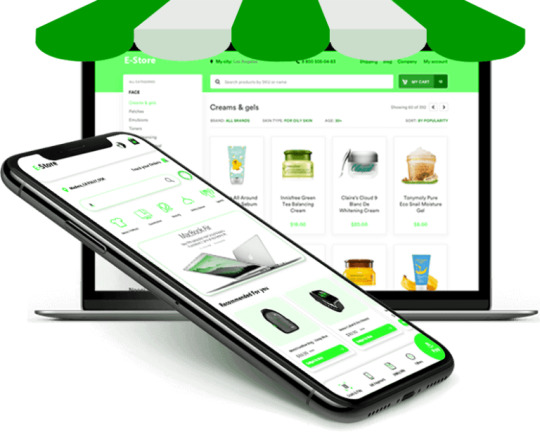
Woo Commerce is an open-source WordPress plugin that specifically benefits eCommerce websites.
The main purpose of this plugin is to create the most impactful content marketing system & utilize it to run an eStore.
For more info, please visit us : https://www.esignwebservices.in/blog/woocommerce-seo-10-tips-to-rank-your-estore-faster/
#woocommerce #woocommerceplugins #ecommercewebsite #esignwebservices #pluginswordpress #WordPress #contentmarketing #estore #wordpresswebsite #permalink #urlstructure
3 notes
·
View notes
Video
youtube
How To Write Part Of Url Structure | How to write User Friendly Url
URL stands for Uniform Resource Locator, which is another term for a website's or resource's URL. It not only reveals the location of the resource (page, video, file, etc.) online, but it also provides information about the query being requested, page number, or even website design.
A simple web address will include at least three components (such as https://getsetseo.com) and up to nine in the case of a complex URL. The protocol (or scheme), subdomain, top-level domain, query, parameters, domain name, port, path, and fragment are the nine components of a URL.
Let's take a closer look at URL structure in the next sections.
1. Scheme
2. Subdomain
3. Second-level Domain
4. Top-level Domain
5. Subdirectory
6. Port
7. Path
8. Query
9. Parameters
10. Fragments
#design #video #url #urlstructure #userexperience #userfriendlywebsite #userfriendlyurl #urloptimization #googlefriendlyurl #seo #onpage #onpageseo #onpageseoservices #UniformResourceLocator
0 notes
Text
5 Most Important On-Page Techniques To Move Up On Search Engine Rankings
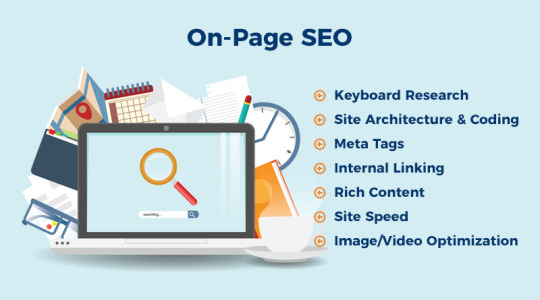
Whatever you do to improve your website’s ranking with the targeted search engine, the efforts would fall under Search Engine Optimisation. The bottom line is however to make the website as relevant to the audience as possible, so that they search for it for its reputation, making it valuable to the search engine.
Both on-page and of-page SEO is required to achieve maximum exposure, but this blog focuses on top 5 on-page SEO techniques to bolster reach of your online marketing campaign.
Traffic-centric Content
No one would ever know anything about your business if it’s not content. So it is communicating to your potential customers. OK content is just info but great content has info represented in a form that the readers want to find and read more of it; basically they want to participate in the communication started by you. This leads to brand awareness and ultimately to the customer retention and loyalty.
Thus your content should be:
Original and usefulin the form ofarticles / blog, images, videos, presentations, infographics, comments etc. that adds value to the audience.
Published first on your website. It’s a good practicebutpublishing on high quality website also works wonders.
Accompanied by text. Non-text content like videos and images should always have a text description.
Well researchedwhich is like answering certain query posed by the person who launched the search.
Free from low-quality, which translates into generic, keyword stuffed, short form or thin, plagiarized and irrelevance.
Page Titles, Description & Formatting
A search engine crawls you website for elements like headings, page title, the description of the page, and images to know what the page is all about. Then depending upon other important factors considered by the search algorithms, search engines rank your page / website.
Page titles: No two pages should be same in terms of both title and its purpose to be clear to the user. They should know what the page is about based on the keywords of interest and focus.
Meta Descriptions: While looking for the relevant page when it appears among the other links listed on the search, the users scan through the page, explanatory yet short and precise (in under 150 characters). After all search engines look for them to consider if it matches the query of the user.
Formatting: This basically boils down toheading (h1) and sub headings (h2) tags placed appropriately along with bold, underline or italics highlighting important parts of the pagetomake it readable for the user.
Images: Using original and optimised images having a descriptive file name can boost the performance of your content but make sure its loading is not slowing down the website. And do not forget to use ALT tag for image description.
Internal Links
Though it’s a good practice to place links on other websites to increase authority of your website, internal links are also equally important.It improves navigation for the user also allowing website to be properly crawled by the search crawlers.Improve your internal linking efforts by using content links (to redirect the readers to other related pages) and permanent navigation links.
Doing this helps in:
Making users stay: Finding one relevant content piece after another through internal linking keeps the users on your website longer, increasing chances of interaction.
Letting search engine see other pages, including important ones: A page with links takes the search engine crawlers to those linked pages as well. And with some pages being more important that others linked in this manner get highlighted to the search engine without any separate effort.
URL Structure
How your URL is structured is important to both, the search engine as well as your target audience, making it a very important part of on-page SEO optimization process. To get it right, you need to focus on the following 4 aspects of a good URL structure:
Permanent links: URL of each page is a permanent link; to keep it in good books of search engine keepit under 255 characters, different words / parts of URL to beseparated by hyphens.
Categories: Categorisation is grouping at best to make search engines find your pages easily and fast. You can introduce as many sub-categories as you want for the same purpose of clarity and speed.
Breadcrumbs: The main purpose is again to make navigation through the website easier, in a way they always know their way in and out of the website.
User Sitemap: An html file that serves like a map for the search engine as well as user showing the structure of your website is sitemap.
Speed & Authority
Fast often means better when it comes to being online and Google has never made it a secret, even added it as a ranking factor.So, ensure that your website loads in a blink of an eye.
Another aspect to pay attention is to get the page authority up by getting it written by those who know their subject and others know them. If you can’t find someone like that, become one by establishing authority;link yourweb-published content with your Google+ or other social media profiles. If you stay active on the web with credible content, gradually you gainvaluable followers underlining your authority to the search engine.
When you work on all the 5 elements of on-page SEO mentioned above, the chances of improving site ranking grows manifold. Would you risk not having work on these rather?
Read the full article
0 notes
Photo
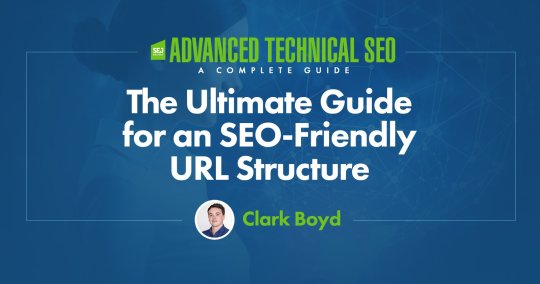
The #UltimateGuide for an #SEO-Friendly #URLStructure via @clarkboyd http://snip.ly/scksp3
0 notes